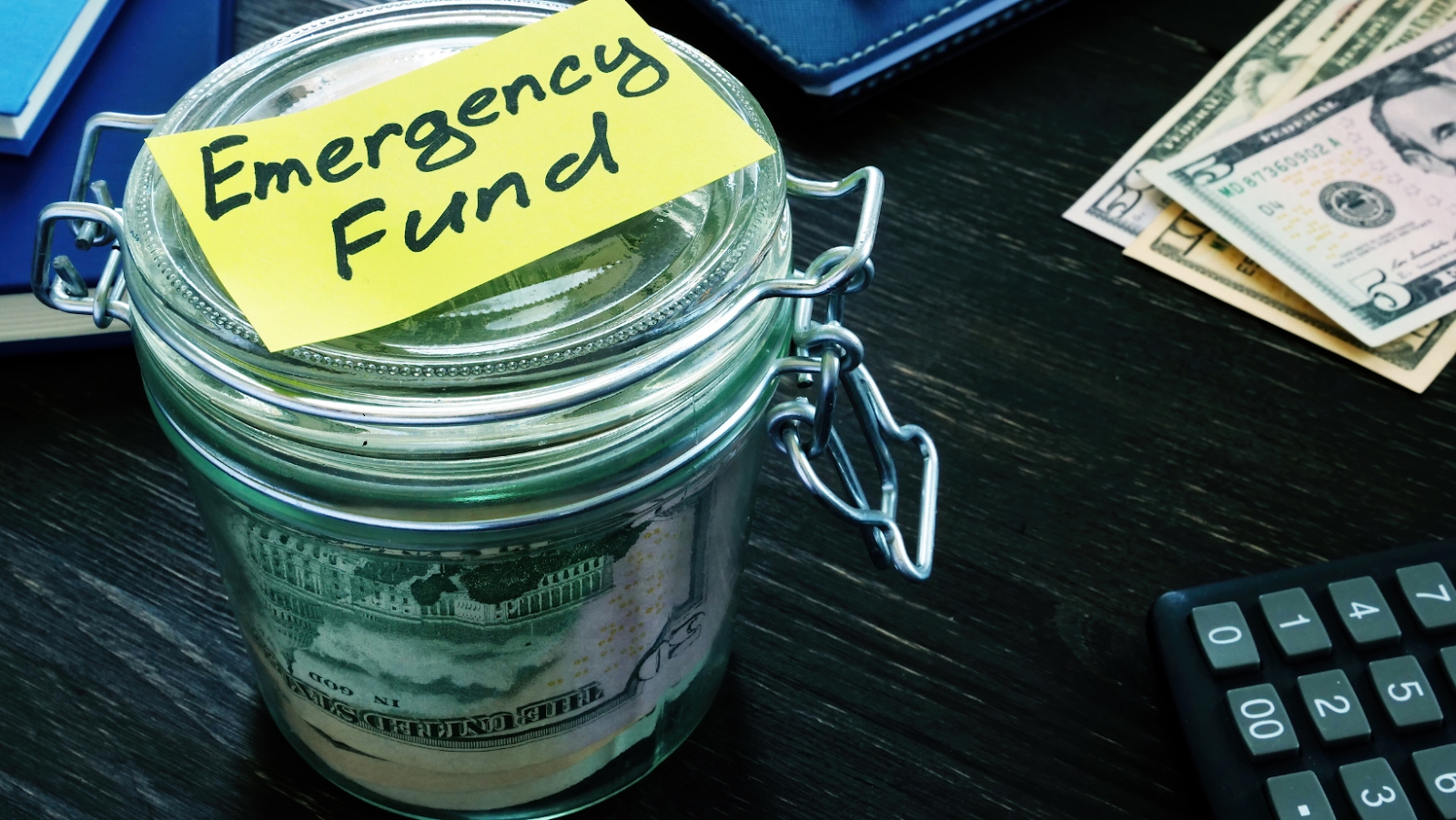
As an entrepreneur, you’re no stranger to the unpredictable nature of the business world. From economic downturns to unexpected expenses, unforeseen circumstances can jeopardize your financial stability in an instant. That’s why having an emergency fund is not just a smart financial move, but a crucial one for entrepreneurs. An emergency fund serves as a safety net, providing you with the necessary resources to navigate through tough times and keep your business afloat. However, building and managing an emergency fund as a business owner requires careful planning and consideration.
Explore five effective emergency fund strategies tailored specifically for entrepreneurs that will equip you with the knowledge and tools to protect your business and personal finances when the unexpected strikes. Whether you’re just starting your entrepreneurial journey or looking to strengthen your financial resilience, these strategies will provide valuable insights to help you weather any storm.
Understanding the Importance of an Emergency Fund
Simply put, an emergency fund is money set aside to cover unexpected expenses or income shortfalls which can include everything from a sudden drop in sales to an unexpected medical bill or equipment repair.
Having a dedicated emergency fund is essential for entrepreneurs as it provides a safety net in case of unexpected financial disruption. They also can prevent the need to take on debt or dip into personal savings to cover business expenses, which can quickly cause both business and personal problems if issues remain ongoing.
Why Entrepreneurs Need an Emergency Fund
For entrepreneurs, an emergency fund is especially important because their income is typically more unpredictable than someone with a traditional 9-to-5 job. Unlike a regular employee who receives a steady paycheck, entrepreneurs rely on the success of their business for income, one that can fluctuate greatly from month to month, making it difficult to plan for unexpected expenses.
Along with the unpredictable nature of their income, entrepreneurs also have a greater financial responsibility for their businesses, being the ones to cover unexpected costs that arise. Without an emergency fund to fall back on, these unexpected costs can quickly add up and put a strain on the business’s finances.
How Much Should Be in Your Emergency Fund
The amount you should aim to save in your emergency fund will depend on a few factors, such as your monthly expenses and the stability of your income. As a general rule of thumb, aim to save at least three to six months’ worth of living expenses in your emergency fund.
Emergency funds are a personal endeavor and will vary from entrepreneur to entrepreneur. For example, if you have a stable income and low monthly expenses, you may be able to get away with a smaller emergency fund. On the other hand, if your income is more unpredictable or you have higher monthly expenses, you may need to save more.
Ultimately, the goal of an emergency fund is to provide a cushion in case of unexpected financial emergencies. By taking the time to build up your emergency fund, you can help protect your business and your personal finances from unexpected expenses or income shortfalls.
Strategy 1: The Incremental Savings Approach
A common emergency fund strategy is the incremental savings approach, which involves setting realistic savings goals and automating your contributions. But, there’s more to it than just that.
Emergency funds are essential to have in case of unexpected expenses or loss of income. It’s important to have a plan in place to build up your emergency fund over time. The incremental savings approach is a great way to start building your emergency fund without feeling overwhelmed.
Setting Realistic Savings Goals
When setting savings goals, it’s important to consider your income, expenses, and any outstanding debt. Be realistic about how much you can afford to save each month. Start by setting a goal to save $500, then gradually increase that goal over time. You can also break down your savings goal into smaller milestones to make it more manageable.
For example, if your goal is to save $5,000 in a year, you can break it down into saving $417 per month or $96 per week. This way, you can track your progress and adjust your budget accordingly.
Automating Your Savings Contributions
To make saving easier, consider automating your emergency fund contributions. Set up automatic transfers from your checking account to your emergency fund at the frequency that suits you best. By doing this, you’ll be less likely to spend the money you intended to save.
Another way to automate your savings is to use apps that round up your purchases and deposit the difference into your emergency fund, meaning you’re saving without even thinking about it.
Remember, building an emergency fund takes time and discipline. But, by using the incremental savings approach and automating your contributions, you’ll be well on your way to financial security.
Strategy 2: The Percentage of Profits Method
Another emergency fund strategy is the percentage of profits method. This involves determining a percentage of your profits to set aside for emergencies. It’s a great way to ensure that you have a safety net in place, should any unexpected expenses arise.
But how do you determine the right percentage for your business?
Determining the Right Percentage for Your Business
The percentage you choose should be based on your business’s income and expenses. You’ll want to take a close look at your monthly revenue and subtract your expenses to determine your profits. From there, you can decide on a percentage that you’re comfortable setting aside for emergencies.
A good starting point may be to aim to save 10% of your profits each month. This may seem like a small amount, but over time it can add up and provide you with a solid emergency fund.
Of course, the percentage you choose will depend on your individual business needs. If you have a lot of overhead costs or are in a volatile industry, you may want to save a larger percentage each month.
Adjusting Your Percentage as Your Business Grows
As your business grows, you may need to adjust the percentage of profits you save for emergencies. For example, if you experience a period of rapid growth and your profits increase significantly, you may want to increase the amount you’re setting aside for emergencies.
On the other hand, if your business experiences a downturn or you’re facing unexpected expenses, you may need to temporarily decrease the percentage you’re saving for emergencies.
The key is to be flexible and reassess your savings goals regularly. By doing so, you can ensure that you always have enough money set aside to weather any financial storms that come your way.
Strategy 3: The Separate Business Emergency Fund
A separate business emergency fund is another emergency fund strategy worth considering for entrepreneurs.
Benefits of a Dedicated Business Emergency Fund
Separating your personal and business finances can be a smart move for entrepreneurs. By having a dedicated business emergency fund, you’ll have a clear understanding of your business’s financial position.
Having a separate emergency fund for your business can help you avoid dipping into personal savings or credit cards to cover unexpected expenses. It can also help you avoid mixing business and personal expenses, which can make it difficult to track your business’s financial health.
Additionally, having a dedicated business emergency fund can give you peace of mind. Knowing that you have funds set aside specifically for unexpected expenses can help you feel more secure in your business.
How to Set up and Manage a Separate Account
To set up a separate business emergency fund, open a new bank account specifically for this purpose. Look for a business savings account that offers competitive interest rates and low fees.
Once you have your new account set up, set up automatic transfers from your business checking account. This can help ensure that you’re consistently contributing to your emergency fund without having to think about it.
When managing your separate business emergency fund, make sure to keep the two accounts separate and record all transactions in your accounting software. This can help you track your business’s cash flow and ensure that you’re not accidentally mixing personal and business expenses.
Remember to regularly review your emergency fund balance and adjust your contributions as needed. If you have a particularly slow month or a major unexpected expense, you may need to adjust your contributions to ensure that your emergency fund stays fully funded.
Strategy 4: Diversifying Your Emergency Fund
Diversifying your emergency fund is another way to protect your financial position as an entrepreneur. It’s important to have a safety net in case of unexpected events, such as a downturn in the economy or a sudden decrease in revenue. By diversifying your emergency fund, you can help mitigate some of these risks.
Investing in Low-Risk Assets
Consider investing some of your emergency fund savings in low-risk assets, such as certificates of deposit (CDs) or a money market account. These types of accounts offer higher interest rates than traditional savings accounts while still providing easy access to your funds in case of an emergency.
CDs are a type of savings account that typically offer higher interest rates than traditional savings accounts. They are also FDIC-insured, which means that your money is protected up to $250,000 per account. Money market accounts are another low-risk investment option that offer higher interest rates than traditional savings accounts. They also provide easy access to your funds, typically through checks or debit cards.
Balancing Liquidity and Growth
When diversifying your emergency fund, be mindful of finding the right balance between liquidity and growth. You’ll want to ensure easy access to your funds, but also want to earn a reasonable return on your investment.
One way to balance liquidity and growth is to create a tiered emergency fund. This means that you have different levels of funds that are easily accessible depending on the severity of the emergency. For example, you could keep one month’s worth of expenses in a traditional savings account for immediate access, while investing the remaining emergency fund in a CD or money market account for higher returns.
Another option is to consider investing in short-term bond funds or exchange-traded funds (ETFs) that offer higher returns than traditional savings accounts while still maintaining liquidity. These types of investments are not FDIC-insured, so it’s important to do your research and understand the risks before investing.
Diversifying your emergency fund can help protect your financial position as an entrepreneur. By investing in low-risk assets and finding the right balance between liquidity and growth, you can create a safety net that will provide peace of mind during uncertain times.
Conclusion
By implementing one or more of these emergency fund strategies, you’ll be much better prepared for unexpected expenses or income shortfalls that may arise as an entrepreneur. Remember to first understand the importance of an emergency fund and set achievable savings goals. The key is to be proactive and develop a plan that works best for your business’s unique financial situation.

